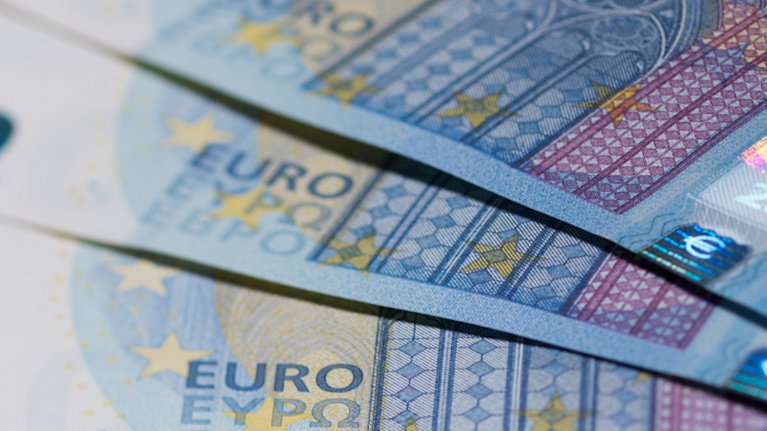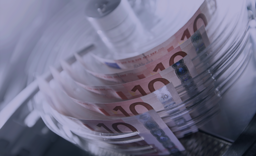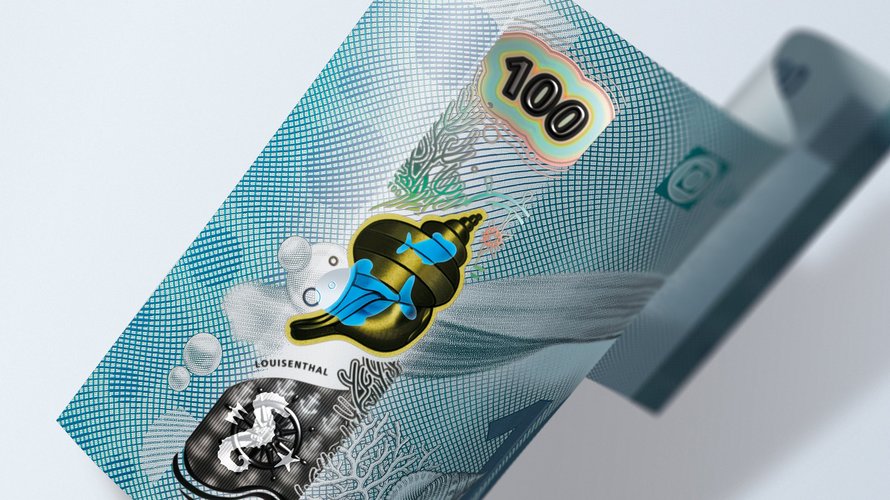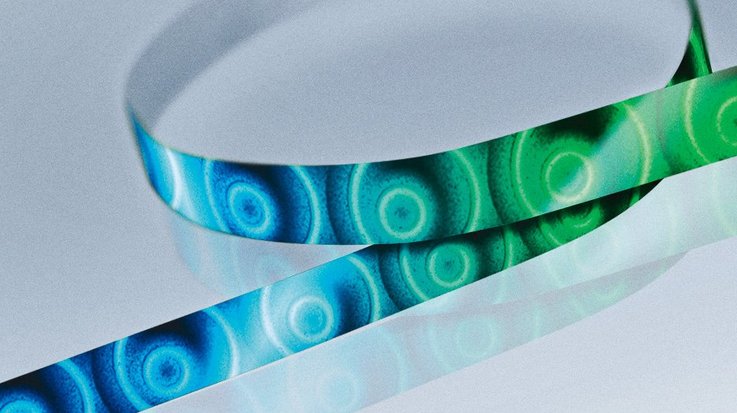
30 years of holograms on banknotes
1988 saw the first use of a hologram on a circulating note. Since then, holograms, also known as diffractive Optically Variable Devices (OVDs), have become one of the most common Level 1 security features on banknotes. They now appear on more than 300 denominations in 97 currencies. Refinements and technological developments have driven market penetration.
The issuance of the Austrian 500 shilling note in 1988 was widely noticed by the banknote industry. For the first time in banknote printing history, a foil application (Kinegram) was used as a security feature on a circulating note. Its benefits were immediately apparent: As “Optically Variably Devices”, holograms draw users’ attention and are easily authenticated by the naked eye. Little wonder that security holograms soon became very popular within the global banknote industry. Since then, holograms have been incorporated into banknotes as security threads, stripes, patches, and window features. Significantly, they found their way onto the euro in 2002: The first series went into circulation with a hologram on all seven notes; patches on the higher denominations and stripes on the lower ones. The second euro series, issued 11 years later, marked another revolutionary step for OVDs on banknotes, as the stripe was registered to the printed design, so the distinctly different images were in the same place on every banknote. And the new 20 euro series, issued in 2015, helped reinforce the so-called ‘portrait window’, a see-through hologram that has different effects when viewed from the front and reverse.
Micro-mirror technology is featured in RollingStar® and Galaxy®. Their attractiveness and design flexibility create visual links between embedded, printed, and applied features. They tell a story that users can grasp intuitively.
Clemens Berger, Chairman of the Management Board, Louisenthal
30 years of OVDs on banknotes has seen an exceptional number of technological refinements, including embossed rainbow holograms, distinct animations, color shifting effects, volume holograms, registered demetallisation, etc. Nowadays, the development of micro-mirrors and app-based authentication will most certainly secure the future of holograms on banknotes.
Modern security features tell a story
Louisenthal is the largest global private supplier of banknote substrate and foil-based security elements. It is a fully owned subsidiary of G+D. We talked to Clemens Berger, Chairman of the Management Board of Louisenthal.
Mr. Berger, holograms have supported banknote security for almost three decades. Do they still play a vital part?
In 1988, when a hologram was first used as a banknote security feature, it proved quite a sensation. Technological refinements in recent years, however, have changed the role of holograms. Optically variable security features nowadays often use holographic techniques, but not all do. Louisenthal’s flagship security feature “RollingStar® LEAD” OVD does not depend wholly on holographics for its effect but on arrays of micro-mirrors that create vivid movement, deeper 3D image depths, and color change.
What differences are there between early security features and modern ones?
Aside from technological refinements, there has been a major change in the role of the user. Classic printed security features, such as the see-through feature and micro printing, need an active interest and some knowledge on the part of the user.
What part does the substrate play here?
In today’s modern substrates, most of the security features come embedded in the substrate. Therefore, the design of a banknote is much more closely linked to the substrate than before. Take for example Louisenthal’s water house note: A single-sided R&D design study incorporating the security features of RollingStar LEAD, a security foil, and the RollingStar Registered security thread. With this specimen banknote, we are anticipating future trends and showcasing major innovations, such as micro-mirrors, combined with other optically variable effects in a condensed format.
Let’s take a quick look at the worldwide substrate market. What impact does it have if countries like India, which is the world’s second largest producer and consumer of banknotes, intend to become self-sufficient in the materials needed for their currency?
Attempts by the central banks of large emerging economies, such as India, to become self-sufficient in the production of banknote paper may well lead to some consolidation in the private banknote paper market. There are, of course, some niche products such as pure polymer substrates, but their global market share is less than 4%. On the other hand, composite substrates such as our “Hybrid” (polymer-paper-polymer) are gaining market share because they offer better anti-soiling properties than cotton paper. From my point of view, the consolidation will primarily affect those companies that offer the least integration between substrates and security features.
Simple authentication and the best possible machine readability
Today the challenge of designing a new series of banknotes lies in meeting the requirements of ordinary citizens as well as those of the multitude of participants in the cash cycle. Banknotes must be as visually appealing as they are functional, and fit smoothly into the cash cycle. All security features must therefore be harmonized with one another as much as possible, so that simple authentication and the best possible machine readability are guaranteed. With RollingStar® and Galaxy® security thread, Louisenthal offers reliable visual authentication coupled with highly specific machine readable authentication. Additionally, RollingStar® LEAD is based on tiny micro-mirrors that are combined with other optically variable effects such as running, depth, and pumping effects. This creates bright, striking, and dynamic movements and eye-catching color shifts that pass along the foil when tilted. The RollingStar® Registered security thread repeats the central motif of the banknote and enables even inexperienced observers to recognize the security features quickly and unambiguously.
Related topics
Get in touch
If you have any questions about our end-to-end business solutions or about our SecurityTech company, seek expert advice, or want to give us your feedback, our team is here to support you, anytime.








